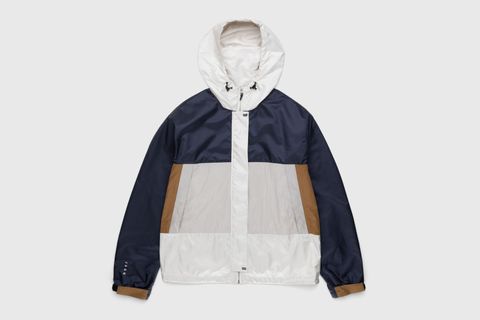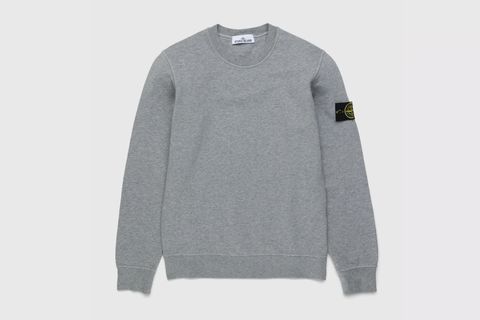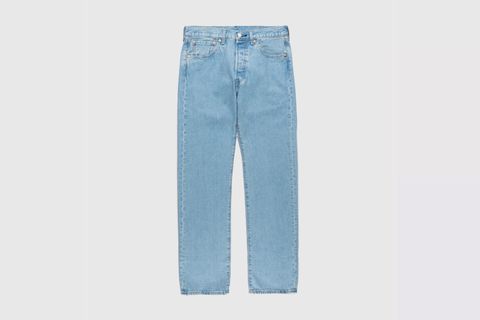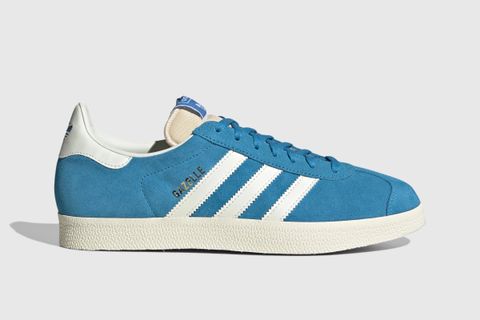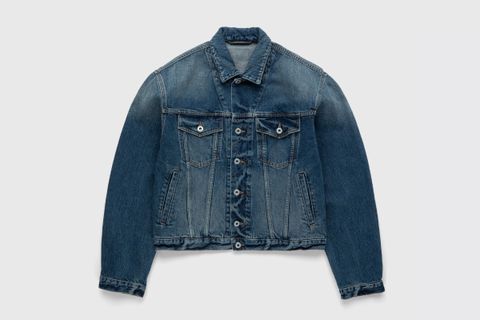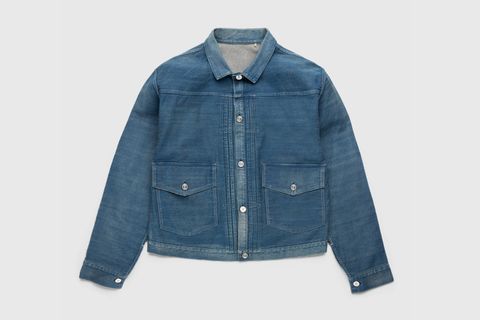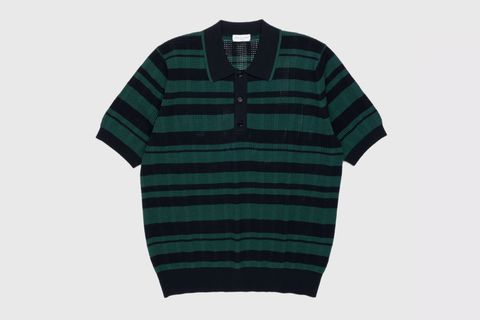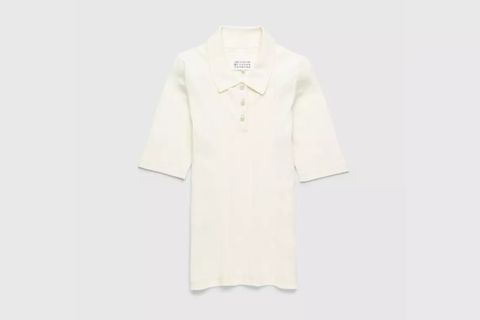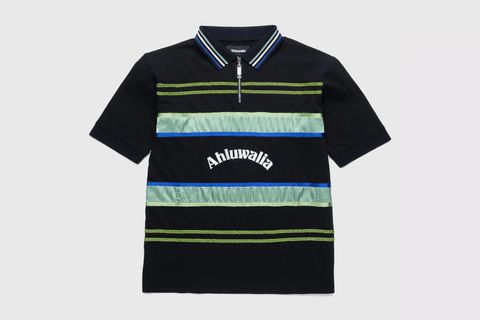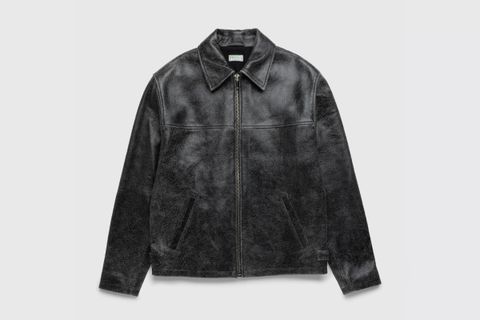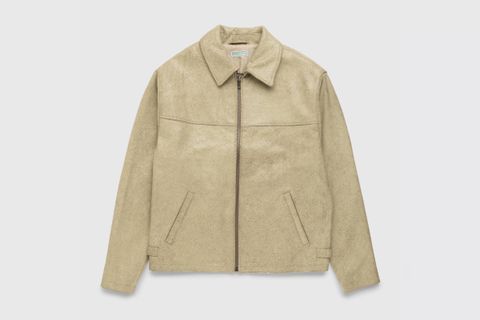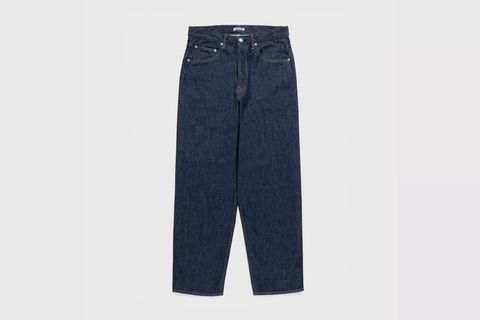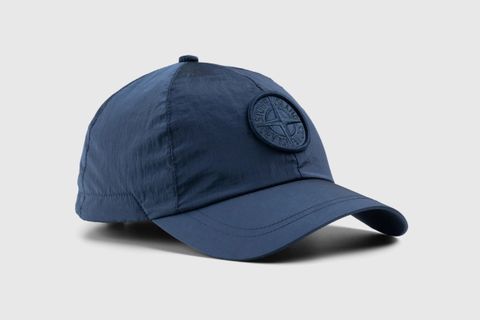Stone Island, Kate Moss & Blur: How Britpop Brought Casuals Style to the Masses
You don't forget the first time someone smashes you in the face with a pint of lukewarm piss. It was 2005 and I was 15 years old, standing in the City of Manchester Stadium waiting for Oasis to take the stage.
They might have been in their twilight years, but even then, Oasis homecomings were treated by Mancunians as communal gatherings rather than mere concerts. Think Woodstock, but replace the zooted hippies with northern English lads in Stone Island charged up on beer and cocaine. It was exhilarating, debauched, at times violent, and completely terrifying.
Ten years earlier, Oasis and southern rivals Blur were at the vanguard of Britpop, an umbrella term for a guitar band movement that rejected the introspection of grunge and all things American. Kurt Cobain was dead and a new wave of UK bands were leading the charge at home.
Shop similar products
As this blogger wrote in 2014:
Thatcher was gone, and with her the need for popular culture to hang out at the margins, through illegal raves or hooligan culture. People of all classes could have, do and be what they wanted to, and they generally did. In this climate the sharing of these two vital organs of British cultural heritage must have seemed the most natural of actions — navel gazing, worry, introspection, bombast, the cult of self and neoliberalism were, for a moment, all yesterday’s news. As one youthful chameleon saw it, in an unparalleled act of zeitgeist channelling, ‘things could only get better’ — and for most of us, for a long while, they did.
Unfortunately, idealism and reality are often at odds, and it didn't take long for politicians to exploit the media-driven concept of "Cool Brittania" for their own ends. Depending on who you ask, Britpop was either the last great British youth phenomenon or a regrettable era of noxious chauvinism. Some in the latter camp take their objections further, joining the dots from the era's soft nationalism to the winding road signposted Brexit.
Style-wise, however, it was a scene that had an indelible impact on those who grew up around it, both in the UK and further afield, and can be directly contributed to the rise of blokecore that incorporates Stone Island pieces with popular football kits and more often than not a pair of comfy Samba's.
Western culture has a knack for dichotomy and Britpop was no different. As the story goes, you had Oasis, "working-class heroes" embodying the gritty spirit of Manchester, and then there was Blur, the "southern softies" more in tune with university students and artisanal latte-drinking Guardian readers. The reality, of course, was a little less black and white.
"At its peak, with the Blur vs. Oasis chart battle [between "Country House" and "Roll With It" for No. 1 single], it was headline news across the country," says Ollie Evans of vintage fashion platform Too Hot Limited. "You couldn’t turn on the TV or radio without people talking about it. It was massive and it came at a point in British history when a lot of great pop culture moments were making waves around the world.
"We had the YBAs [Young British Artists, including Damien Hirst and Tracey Emin]. We had an exciting club culture and dance music. We had Kate Moss. We had a New Labour government. We had Britpop. Everything seemed to come together in those last few years of the ’90s."
Led by notoriously combustible siblings Noel and Liam Gallagher, Oasis' style was heavily influenced by the brothers' milieu. It was mod revivalism but with a louche, football casuals twist. Parkas, polos, track jackets, and bucket hats were the group's core uniform, with a bit of sportswear thrown in for good measure. Blue adidas Gazelles, Levi's 504s, and Stone Island crewnecks became the costume de rigueur for weekend warriors as they swaggered into football stadiums across the country, buoyed by the sounds of (What's the Story) Morning Glory?.
Shop similar products
"A lot of the northern bands in particular were football lads or grew up with that culture, and that’s what was apparent in the way they dressed and sounded," says Evans. "In the case of Oasis, they came out of the tail end of that 'Madchester' revolution that saw the merging of dance and guitar music, with bands like The Stone Roses and the Happy Mondays, who were both dressing in a very baggy, casual way. [Happy Mondays singer] Shaun Ryder refers to it as 'hippy casual' or 'designer hippy,' and I think the best style from that era came as an extension of that philosophy."
If Oasis preferred a free-flowing casuals look, Blur were slightly more preened, putting an impertinent twist on skinhead style while still drawing heavily from mod aesthetics. Frontman Damon Albarn would pair a Fred Perry polo shirt with a Harrington jacket, cuffed jeans, and cherry red Doc Martens. A hooped earring and the occasional piece of tribal jewelry conveyed a boyish charm and, like grunge, there was an unkempt chic to their style, which, despite latter-day flirtations with US indie rock, remained distinctly British.
As Blur and Oasis fought for primacy, bands such as Pulp and Suede offered more eccentric representations of Britishness. Hip-swiveling Pulp singer Jarvis Cocker brought a touch of dandy to the scene, with the contours of his spindly frame embellished by retro suits obtained from thrift stores. Suede frontman Brett Anderson took a more androgynous approach, mixing tight leather jackets with a bare chest or blouse. A decade later, you could see Anderson's influence on Pete Doherty and Carl Barat of The Libertines, who in turn served as muses for the music-obsessed Hedi Slimane.
Ask anyone for their defining Britpop brands and, more likely than not, they'll throw up the usual suspects: Burberry, Stone Island, Fred Perry, and adidas. They wouldn't be wrong, but at ground level, the youth were adding more variety to their wardrobes, enthralled by a new wave of sportswear, outdoor, and smart casual labels.
"Berghaus and Rockport were massive," Evans explains. "All my mates wore that stuff. That was definitely more of a Midlands or Manchester look and denoted that you were either a geography teacher or a bit of a scally. The Stone Roses famously wore Berghaus. I really liked that. If you couldn’t afford Rockports, there were Pods, but they were terrible."
The era coincided with a micro-surge in new labels and places to shop. "There were lots of great little brands coming out around that time," says Evans. "I had a lot of 6876 stuff in the late ’90s, when that was all new. I was also really into the early Evisu bits that were coming over from Japan. It isn't now, but that brand was very cool and exciting at that time. Atoo in Birmingham and Duffer of St George in London were the places I discovered a lot of brands I used to wear.
"There was a brand called Oeuf that made some decent sweatshirts. Can’t Skate did some good graphics. Loads of tiny brands that came and went. British streetwear brands like Boxfresh, Bench, Addict were selling a lot of stuff. I wasn’t a fan, though. I thought they were slightly crap but undeniably popular."
Britpop's impact might have been more muted across the pond, but for many, that was part of the attraction. To observe the British petri dish of football, beer, and rock and roll from afar was to look into another world, one far removed from the trail blazed by Cobain and grunge (and a lightyear from mundanities such as Matchbox Twenty and the Dave Matthews Band). One transatlantic fan was brand consultant Chris Black, whose obsession with Britpop stretches back more than 20 years.
"I'm definitely an Oasis guy if I'm picking," Black explains down the phone. "I think Oasis was kind of like mod-meets-hooligan, which is very cool and super-British, so it feels foreign to me. I think Damon [Albarn] is also very cool, but the music just never resonated with me in the same way."
When Black was growing up in Atlanta, he'd flick through legendary British music and style magazines such as Melody Maker, NME, i-D, and The Face. In those pages he discovered the Gallaghers and other giants of UK pop culture. There was an irresistible allure to the images he saw, a ballsiness that captured his young imagination.
"The reality is, it's less about the garment and more about how they're wearing it, or the swag they're wearing it with," Black says. "Liam [Gallagher] wearing Stone Island doesn't make me want to run out and buy Stone Island necessarily, because I don't think I can pull it off the way he did. I want my famous people to be aspirational. I want them to look better than me. That's how it should be.
"Liam wearing wild bucket hats and ugly newer sunglasses, I couldn't do that. But when you're famous, you can do that. That's what creates the mystique and the allure. They were able to take these working class, pretty simple garments and give them this incredible amount of swagger and appeal to a young person in America who didn't really understand at the time why they liked it."
Swagger. That's the keyword. Plenty of that era's icons still resonate today — see how Princess Diana is still remembered more than 20 years after her death and how the late Virgil Abloh's Fall/Winter 2019 pre-collection for Louis Vuitton was inspired by UK funk-pop kings Jamiroquai. For many, ’90s Britain's biggest legacy was a state of mind, although the looks have endured on the cultural periphery
"Certainly I think Britpop style is impacting current-day trends," says Evans. "I’m yet to see a full Britpop resurgence, but we’re skirting around the edges of it. That casual look has been hugely popular recently and I’d be surprised if we didn’t see more of those big jacket/baggy jeans silhouettes appearing."
Today, the UK is limping toward its exit from the European Union in what has been one of the country's most shocking political developments since World War II. The days of Union Jack-clad guitars and mini dresses feel like a lifetime ago, the country today ravaged by infighting and factionalism. Viewed from 2019, Britpop might as well have happened 250 years ago, not 25.
Yes, it could be boorish and chauvinistic, with many of its traits best left in the past forever, but for the kids of that time — especially those like me who grew up in social housing, who feel out of place in the fashion world and probably always will — it taught us to say "Fuck it." As long as you have a bit of confidence, a bit of swagger, you'll get by just fine. Just watch out for flying pints of piss.
